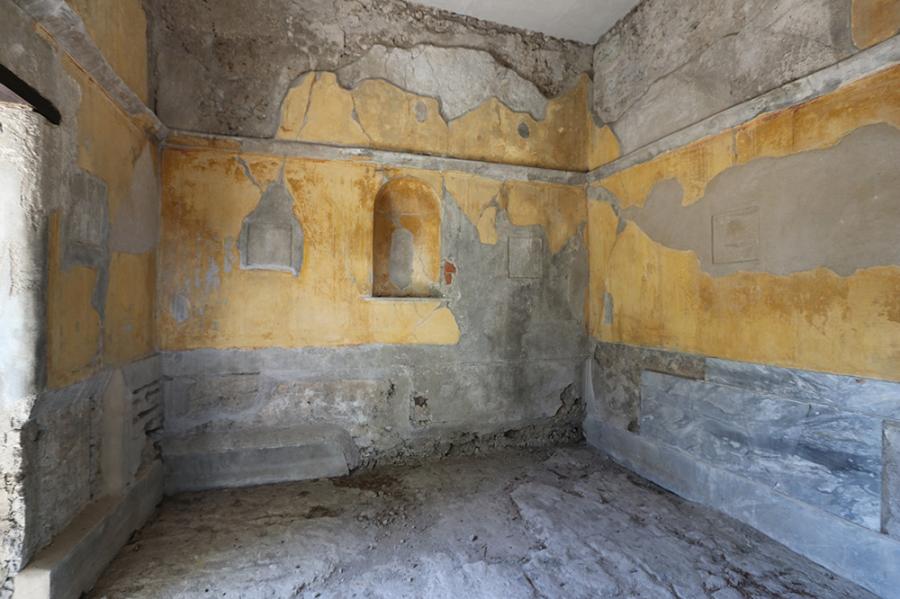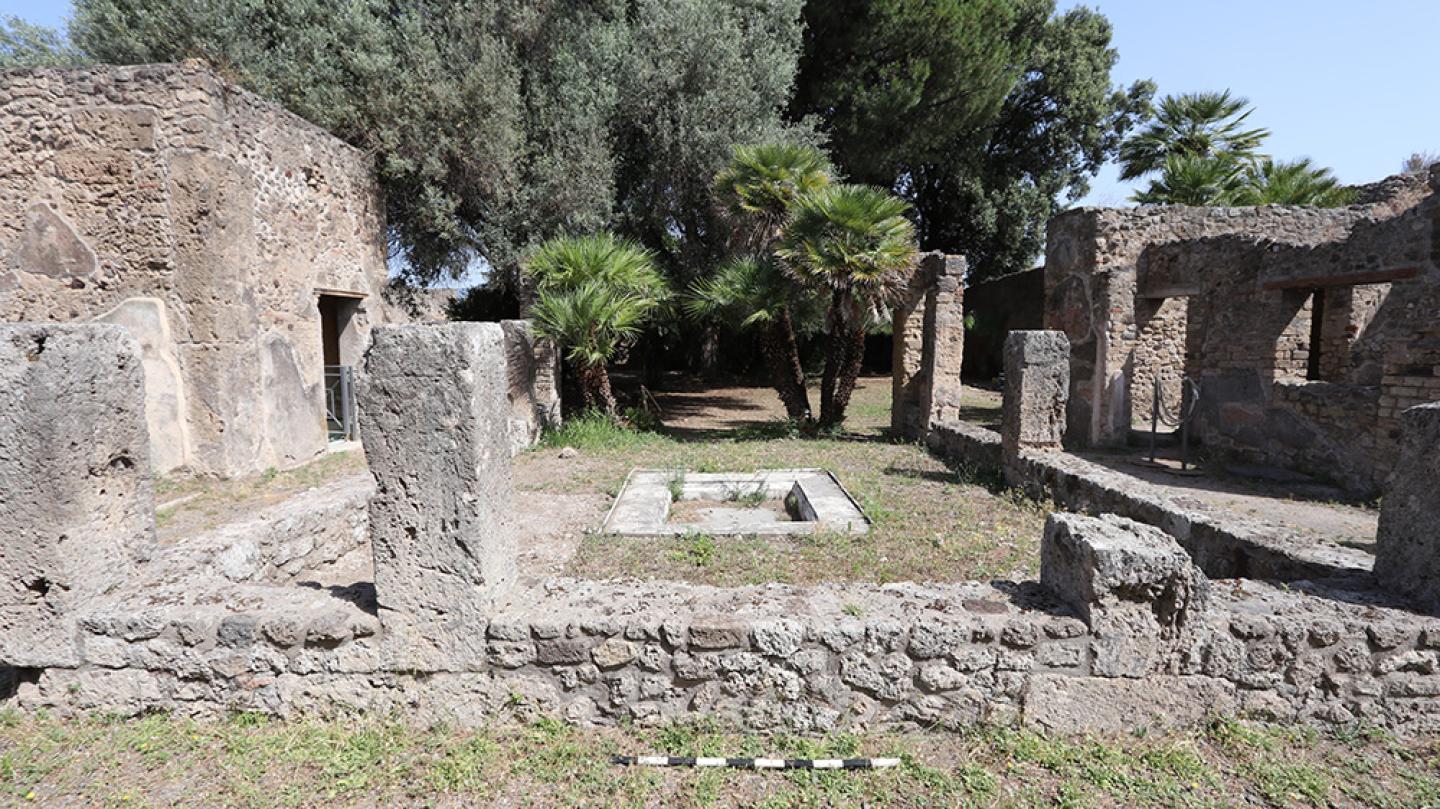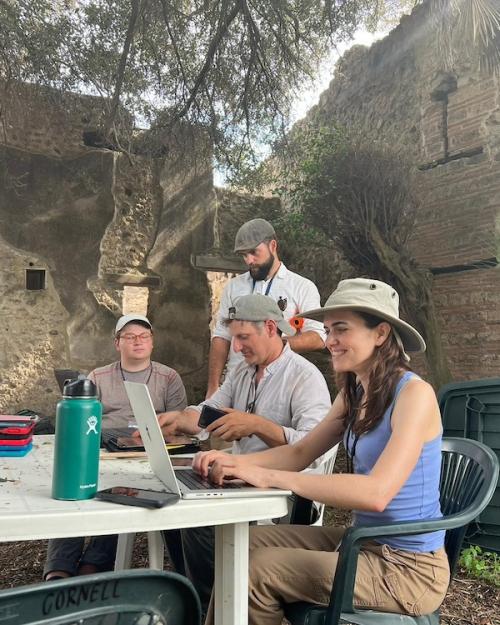What was it like – on a personal, sensory level – to live in ancient Pompeii? Thanks to a grant from the National Endowment for the Humanities (NEH), an online model of a house and garden that stood in the much-excavated city in 79 CE will soon give virtual visitors insight into the answer.
Cornell researchers led by co-PIs Caitie Barrett, associate professor of classics in the College of Arts and Sciences, and Kathryn Gleason, professor emerita of Landscape Architecture in the College of Agriculture and Life Sciences, have received a $150,000 NEH Digital Humanities Advanced Grant that is enabling them to create a 3D virtual modeling project based on the Casa della Regina Carolina, a large Pompeian house.
With an anticipated launch in spring 2026, the open-access model will allow users to navigate the house and garden. The team ultimately seeks to develop avatars that reflect historically accurate dress and body language and a wide range of embodied features, such as gender, age and degree of bodily ability. Users will choose interactive scenarios, including a dinner party in the living room or work in the garden.
Students from the Cornell Virtual Embodiment Lab will collaborate with students and faculty in a game design program at a French research institution, the Université Catholique de l’Ouest (Laval and Nantes), in partnership with the CNRS laboratory AOrOc in Paris, to create the model.
From 2018–2023, a joint Cornell University/University of Bologna team, co-directed by Barrett and Gleason at Cornell and Annalisa Marzano at the University of Bologna, has documented the house and excavated its garden area. The specific aim of the Casa della Regina Carolina Project has been to construct a richer, more multidisciplinary and more inclusive account of the ways that built space shaped Roman domestic life, said the researchers.

In 2020, the National Geographic Society recognized Barrett’s studies of daily life in ancient Rome, naming her a National Geographic Explorer in support of her efforts.
The virtual model, created with excavation data, LiDAR scanning and integrated 3D Geographic Information Systems, will give further insight into the ways that people of different genders, ages and physical conditions would have experienced domestic space.
“Older studies of Pompeian houses typically centered the experiences of the wealthy male property owners, but our project uses innovative archaeological and virtual modeling methods to explore the diversity of people who would have lived and worked in these ancient dwellings, including women, children, elderly relatives and the enslaved,” Barrett said. “Rather than assuming everyone responded to the same spaces in the same way, we emphasize that individuals brought different bodies, perceptions, emotions, and memories to bear on their experiences. We center this diversity and assert that it is crucial to the ways we make meaning out of our lives and those of others.”
In the past 20 years, there has been an increasing push for archaeologists to address the lived experience of the people who once dwelled in the spaces they excavate and to investigate their sensations and emotions, Barrett said. But this is hard to do without bias.
“When attempting to access ancient experiences of a place, the imagined ‘ancient individual’ becomes a mirror of the scholar,” she said. “And given historical structural imbalances within academia, that has often meant privileging the experiences of male, white, able-bodied, upper-middle-class adults over others.”
Barrett proposes that virtual modeling can help create richer, more inclusive accounts of ancient experience.
“By running simulations within a virtual environment, we are not tied to an individual project director’s subjective perceptions,” she said. “We can investigate how people with different embodied identities might navigate a particular space. In exploring the agency of the material world, we ultimately seek to investigate some of the most profoundly human aspects of life at Pompeii: the daily experiences, activities and sensations that constituted people’s lives.”
Within the next two years, the project team aims to publish an online model of the house and garden, complete with an open-access website where scholars and members of the public can navigate the 3D virtual model under a range of conditions.
By spring 2026, Barrett plans to use the virtual model as a teaching tool in courses on Roman archaeology, in connection with Cornell’s Active Learning Initiative.
The project team will also publish its database of archaeological field data, as well as a book synthesizing the archaeological findings with the digital modeling results.
Seed grants from Cornell have supported this project from the beginning: a grant from the Cornell Center for Social Sciences supported the NEH grant application, and an Impact Grant from the Society for the Humanities supported the earliest stages of the digital project.





